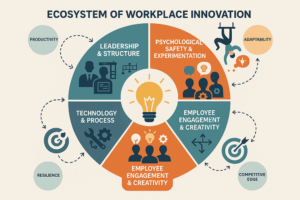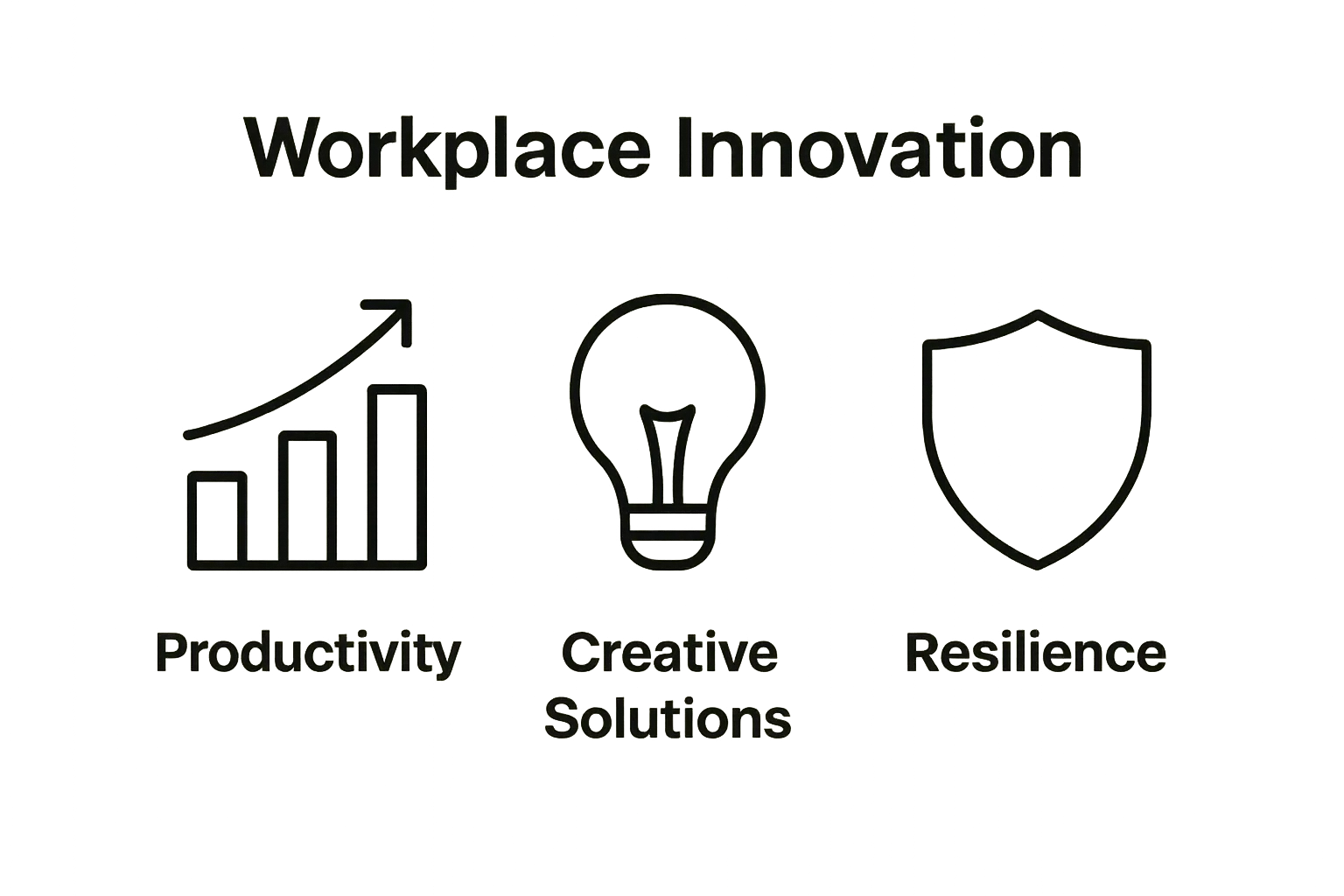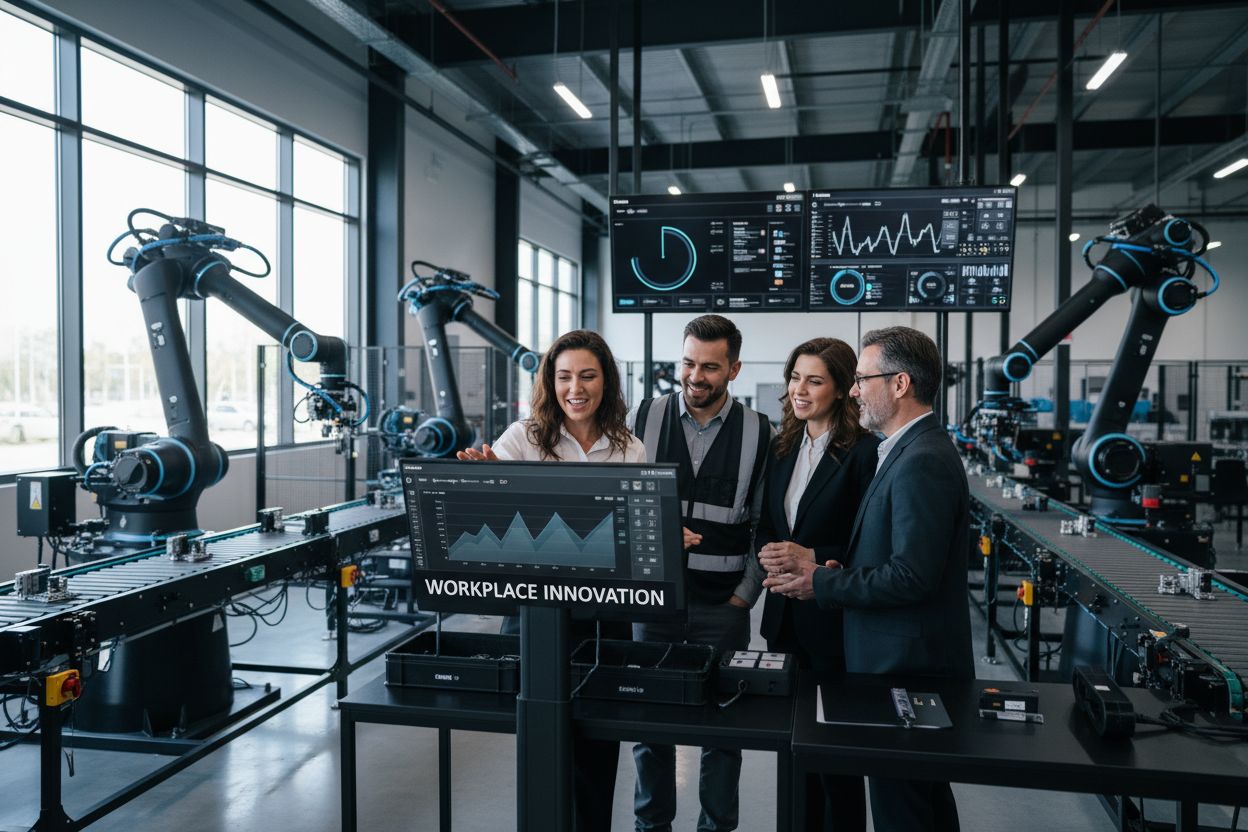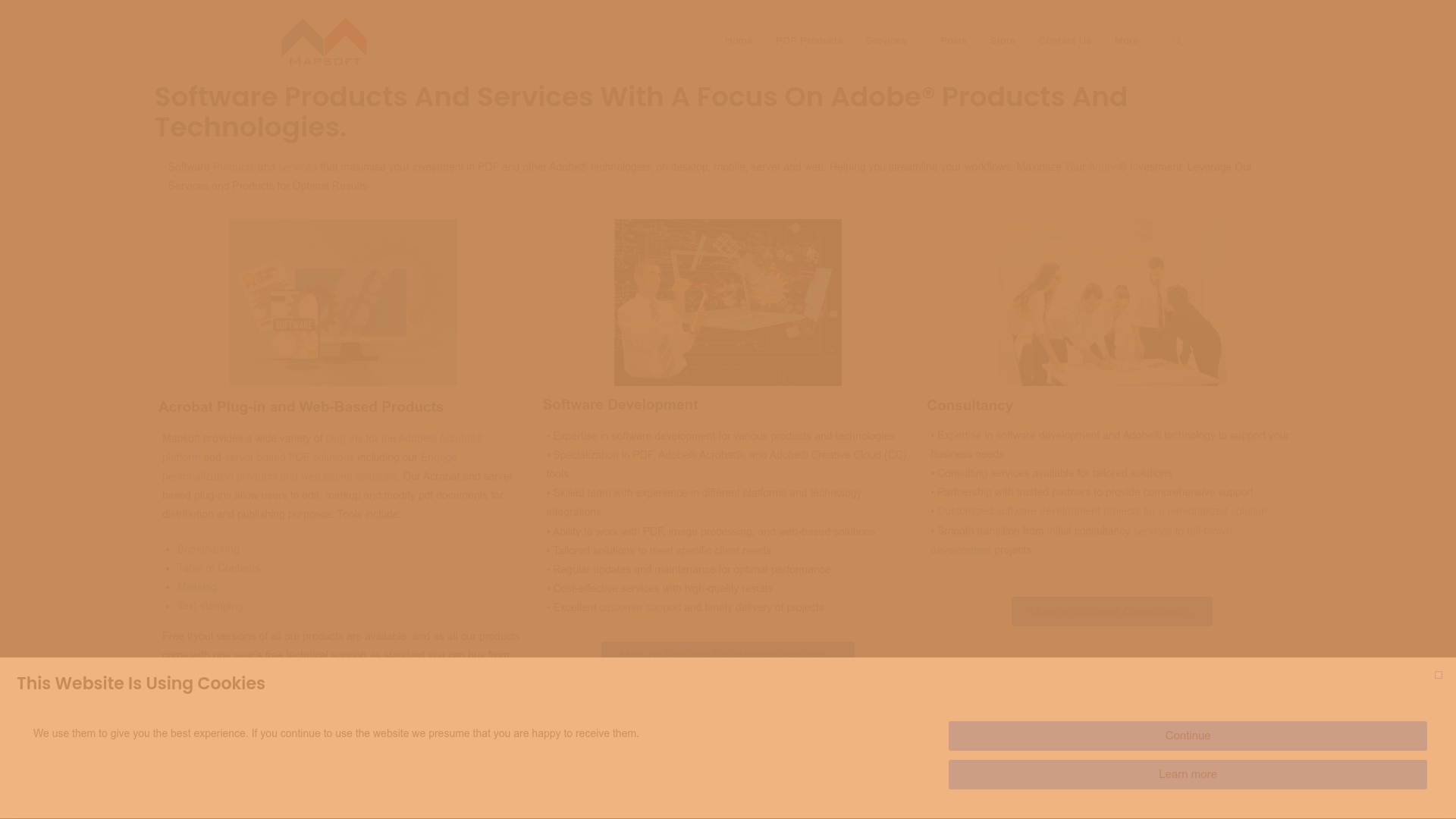Companies everywhere talk about innovation as the secret sauce for success. Yet over 80 percent of business leaders admit their workplace struggles to actually implement new ideas. You might assume it is just about having smart people or new technology. The real game is something most companies overlook entirely and that is building a culture where everyone feels safe to challenge old ways of thinking.

Table of Contents
- Defining Innovation In The Workplace
- The Importance Of Innovation For Businesses
- How Innovation Transforms Work Processes
- Key Elements Of A Culture Of Innovation
- Real-World Examples Of Workplace Innovation
Quick Summary
| Takeaway | Explanation |
|---|---|
| Foster an innovative culture | Cultivating an environment that encourages creativity and risk-taking enhances employee engagement and drives growth. |
| Implement structured innovation processes | Systematically evaluating and testing new ideas ensures effective innovation that aligns with business goals. |
| Empower employees to experiment | Creating psychological safety for employees to propose unconventional ideas leads to valuable learning opportunities and nurtures innovative thinking. |
| Leverage technology for efficiency | Utilizing technological advancements can streamline workflows and improve productivity by automating repetitive tasks. |
| Align innovation with strategic objectives | Integrating innovation into core strategies helps organizations adapt to market changes and sustain competitive advantage. |
Defining Innovation in the Workplace
Innovation in the workplace represents a strategic approach to transforming organizational performance through creative problem solving and novel methods. According to the Organisation for Economic Co-operation and Development, workplace innovation involves implementing new or significantly improved products, processes, organizational structures, and marketing techniques that fundamentally enhance workplace productivity and effectiveness.
Core Components of Workplace Innovation
Workplace innovation is not merely about generating random ideas. It encompasses a systematic method of identifying, developing, and implementing transformative strategies that drive organizational growth. Key characteristics include:
- Continuous improvement of existing processes
- Encouraging employee creativity and engagement
- Developing adaptive solutions to complex challenges
- Creating a culture that supports experimentation
The primary goal of workplace innovation is to build organizational resilience and competitive advantage. By fostering an environment where employees feel empowered to propose and implement new approaches, companies can unlock unprecedented levels of productivity and efficiency.
Below is a table summarizing the core components and characteristics of workplace innovation, making it easier to distinguish each foundational element.
| Component | Description |
|---|---|
| Continuous Improvement | Ongoing efforts to enhance existing processes and workflows. |
| Employee Creativity & Engagement | Encouraging staff to contribute ideas and participate actively. |
| Adaptive Solutions | Developing responses to complex, changing challenges. |
| Support for Experimentation | Fostering an environment where testing new ideas is encouraged. |
| Organizational Resilience | Building the ability to withstand and adapt to disruptions. |
| Competitive Advantage | Creating differentiation and staying ahead of market rivals. |
Strategic Implementation of Innovation
Successful workplace innovation requires a structured approach. As Harvard Business Review highlights, effective innovation involves more than just generating ideas. It demands:
- Systematic evaluation of proposed innovations
- Clear mechanisms for testing and implementing new concepts
- Leadership commitment to supporting creative initiatives
- Robust feedback and iteration processes
By integrating innovation into organizational DNA, businesses can create dynamic environments that continuously evolve, adapt, and respond to changing market demands. This approach transforms innovation from a sporadic event into a sustainable, strategic capability that drives long term success.
The Importance of Innovation for Businesses
Innovation has become a critical strategic imperative for businesses seeking to maintain competitive advantage in an increasingly complex global marketplace. Research from the OECD demonstrates that organizations that consistently prioritize innovation are substantially more likely to survive and thrive in rapidly changing economic environments.
Economic and Competitive Advantages
Businesses that embrace innovation gain significant strategic benefits. Innovative organizations can differentiate themselves by developing unique solutions that address market challenges more effectively than competitors. This approach enables companies to:
- Create distinctive product and service offerings
- Respond quickly to emerging market trends
- Generate new revenue streams
- Attract top talent interested in dynamic work environments
Beyond immediate financial gains, innovation represents a fundamental mechanism for organizational adaptation.
 Companies that systematically integrate innovative thinking into their core strategies can build resilience against market disruptions and technological shifts.
Companies that systematically integrate innovative thinking into their core strategies can build resilience against market disruptions and technological shifts.
Transformative Impact on Organizational Culture
Innovation is not merely a technical process but a profound cultural transformation. Businesses that successfully cultivate an innovation mindset empower employees to think creatively, challenge existing paradigms, and contribute meaningfully to organizational growth. This approach requires:
- Establishing psychological safety for experimenting
- Rewarding creative problem solving
- Creating cross functional collaboration mechanisms
- Supporting continuous learning and skill development
By treating innovation as a strategic capability rather than an occasional activity, businesses can unlock extraordinary potential for growth, efficiency, and long term sustainability. The most successful organizations recognize that innovation is not an optional strategy but a fundamental requirement for remaining competitive in today’s dynamic business landscape.
How Innovation Transforms Work Processes
Innovation fundamentally redesigns how organizations approach work, enabling more dynamic, efficient, and responsive operational models. McKinsey & Company research indicates that organizations strategically implementing innovative approaches can dramatically improve productivity and adaptability.
Technological Reimagination of Workflows
Technological innovation transforms traditional work processes by introducing intelligent automation, data driven decision making, and interconnected systems. This approach allows businesses to:
- Eliminate repetitive manual tasks
- Reduce human error
- Accelerate process completion times
- Enable real time collaboration and information sharing
Modern technological solutions like artificial intelligence and machine learning are not replacement technologies, but collaborative tools that augment human capabilities, allowing employees to focus on higher value strategic activities. Learn more about automating business processes with Adobe PDF solutions to understand how digital transformation can streamline organizational workflows.
Cognitive and Cultural Process Redesign
Innovation transcends technological implementation, fundamentally reshaping organizational thinking and culture. Successful process transformation requires:
- Challenging existing operational assumptions
- Encouraging experimental approaches
- Creating flexible, adaptive work structures
- Developing continuous learning environments
By integrating innovation into core operational strategies, businesses can create agile, responsive environments that rapidly adapt to changing market conditions. This approach transforms work processes from rigid, linear systems into dynamic, interconnected networks capable of rapid iteration and improvement.
The table below compares the primary ways innovation transforms work processes, covering both technological advancements and changes in cognitive and cultural approaches.
| Area of Transformation | Key Initiatives and Outcomes |
|---|---|
| Technological Innovation | Automates manual tasks, reduces errors, enables real-time collaboration. |
| Cognitive Process Redesign | Encourages challenging assumptions, supports experimentation and flexibility. |
| Cultural Process Redesign | Develops continuous learning, empowers employees, promotes adaptability. |
| Operational Adaptability | Switches rigid systems to dynamic, interconnected, and responsive workflows. |
| Strategic Integration | Embeds innovation into core operations for sustained productivity improvements. |
Key Elements of a Culture of Innovation
A culture of innovation represents a holistic organizational approach that systematically nurtures creativity, risk taking, and continuous learning. National Institutes of Health research demonstrates that organizations with intentionally designed innovative cultures consistently outperform their competitors in adaptability and strategic responsiveness.
Leadership and Structural Support
Innovative cultures require deliberate architectural design from leadership. This involves creating organizational structures that:
- Encourage open communication across hierarchical levels
- Provide resources for experimental projects
- Recognize and reward creative thinking
- Minimize punitive responses to calculated risks
Leadership must model innovative behaviors, demonstrating a commitment to continuous improvement and intellectual curiosity.
Our guide on collaboration across teams provides additional insights into building cross functional innovation frameworks.
Psychological Safety and Experimentation
Building an innovation culture demands creating environments where employees feel safe to propose unconventional ideas. This requires:
- Establishing trust within teams
- Valuing diverse perspectives
- Creating structured mechanisms for idea evaluation
- Developing transparent feedback systems
Successful innovation cultures transform failure from a stigmatized outcome into a valuable learning opportunity. By normalizing experimentation and treating setbacks as developmental experiences, organizations can unlock unprecedented creative potential and organizational agility.
Real-World Examples of Workplace Innovation
Workplace innovation extends beyond theoretical concepts, demonstrating tangible transformations across diverse industries. MIT Sloan Management Review highlights that successful innovation implementations create measurable organizational value through strategic and creative approaches.
Technology Sector Innovations
Digital transformation has driven remarkable workplace innovation, particularly in technology companies. Organizations like Google and Microsoft have pioneered innovative workplace strategies that include:
- Implementing flexible work arrangements
- Creating dedicated innovation time for employees
- Developing cross functional collaboration platforms
- Establishing internal venture capital programs for employee ideas
These approaches enable employees to explore creative solutions beyond their primary job responsibilities, fostering a culture of continuous learning and experimentation. Learn more about automating business processes to understand how technological innovation can streamline organizational workflows.
Manufacturing and Process Reimagination
Traditional industries are equally capable of driving workplace innovation. Advanced manufacturing companies have transformed operations by:
- Integrating artificial intelligence in quality control
- Implementing predictive maintenance technologies
- Developing real time data analytics for production optimization
- Creating collaborative robotics work environments
By embracing technological and procedural innovations, organizations can dramatically improve efficiency, reduce operational costs, and create more engaging work environments that attract top talent and drive competitive advantage.

Bring Innovation to Life With Mapsoft’s PDF Solutions
Is your team struggling to turn creative workplace ideas into real process changes? Our article shows that while fostering workplace innovation is essential, making ideas practical often hits roadblocks like inefficient document tasks, slow workflows, and technology gaps. Imagine if your employees could automate repetitive PDF work and focus on strategic thinking instead of being stuck in manual routines. That is how you empower continuous improvement and build a truly innovative culture.

Start enhancing your processes today. Explore Mapsoft PDF Hub for seamless PDF automation that fits your unique workflows. Discover how you can convert, edit, secure, and automate documents all in one place. When you are ready to accelerate innovation, learn more about automating business processes with Adobe PDF solutions or delve into our collaboration strategies for teams. Take your next step now and unlock the power to innovate at scale with Mapsoft.
Frequently Asked Questions
What does workplace innovation mean?
Workplace innovation refers to the strategic transformation of organizational performance through creative problem solving, new processes, products, and organizational structures that enhance productivity and efficiency.
Why is innovation important for businesses?
Innovation is critical for businesses as it helps maintain a competitive advantage, fosters adaptability to market changes, and encourages the development of unique products and services.
How can companies foster a culture of innovation?
Companies can foster a culture of innovation by creating an environment of psychological safety, encouraging open communication, rewarding creative thinking, and providing resources for experimental projects.
What are the benefits of technological innovation in the workplace?
Technological innovation helps streamline workflows, eliminate repetitive tasks, reduce human error, and enable real-time collaboration, ultimately leading to improved productivity and efficiency.
Recommended
- Collaboration Across Teams with Adobe: 2025 Strategies for Success –
- Understanding Hybrid Work Challenges in Today’s Business –
- Fostering Team Collaboration for Powerful Results With Adobe Solutions –
- Thriving Through Adapting to New Technologies
Conclusion
- Companies that excel in innovation in the workplace will thrive in future markets.
- Ultimately, successful innovation in the workplace hinges on a proactive mindset.
- Innovation in the workplace is essential for driving change and embracing new opportunities.
- By valuing diverse ideas, companies can enhance innovation in the workplace.
- Innovation in the workplace drives competitive differentiation and market leadership.
- Through cross-functional collaboration, innovation in the workplace can flourish.
- Establishing a clear vision for innovation in the workplace aligns efforts across teams.
- Innovation in the workplace is vital for sustainability in an evolving market landscape.
- Creating platforms for feedback enhances innovation in the workplace by valuing every voice.
- Investing in employee development is key to fostering innovation in the workplace.
- Encouraging ownership of projects can lead to significant innovation in the workplace.
- Innovation in the workplace requires a commitment to learning and adaptation from all employees.
- Cultivating a mindset around innovation in the workplace can inspire ongoing excellence.
- Innovation in the workplace is not an endpoint but a continuous journey of growth.
- Establishing protocols for innovation in the workplace can lead to consistent improvements.
- The impact of innovation in the workplace extends beyond productivity to employee satisfaction.
- Through strategic focus on innovation in the workplace, businesses can enhance resilience.
- Innovation in the workplace allows organizations to stay ahead of market trends and consumer needs.
- Leaders can drive innovation in the workplace by encouraging diverse perspectives and ideas.
- By fostering an environment of innovation in the workplace, companies can attract top talent.
- Innovation in the workplace is achieved through collaborative efforts and shared goals.
- Effective implementation of innovation in the workplace can transform organizational culture.
- Innovation in the workplace can lead to efficiency gains and enhanced competitive positioning.
- To truly succeed, leaders must embrace innovation in the workplace as a cornerstone of their strategy.
- Organizations that prioritize innovation in the workplace often see improved employee engagement and productivity.
- Innovation in the workplace is essential for fostering a culture of creativity and adaptability.



